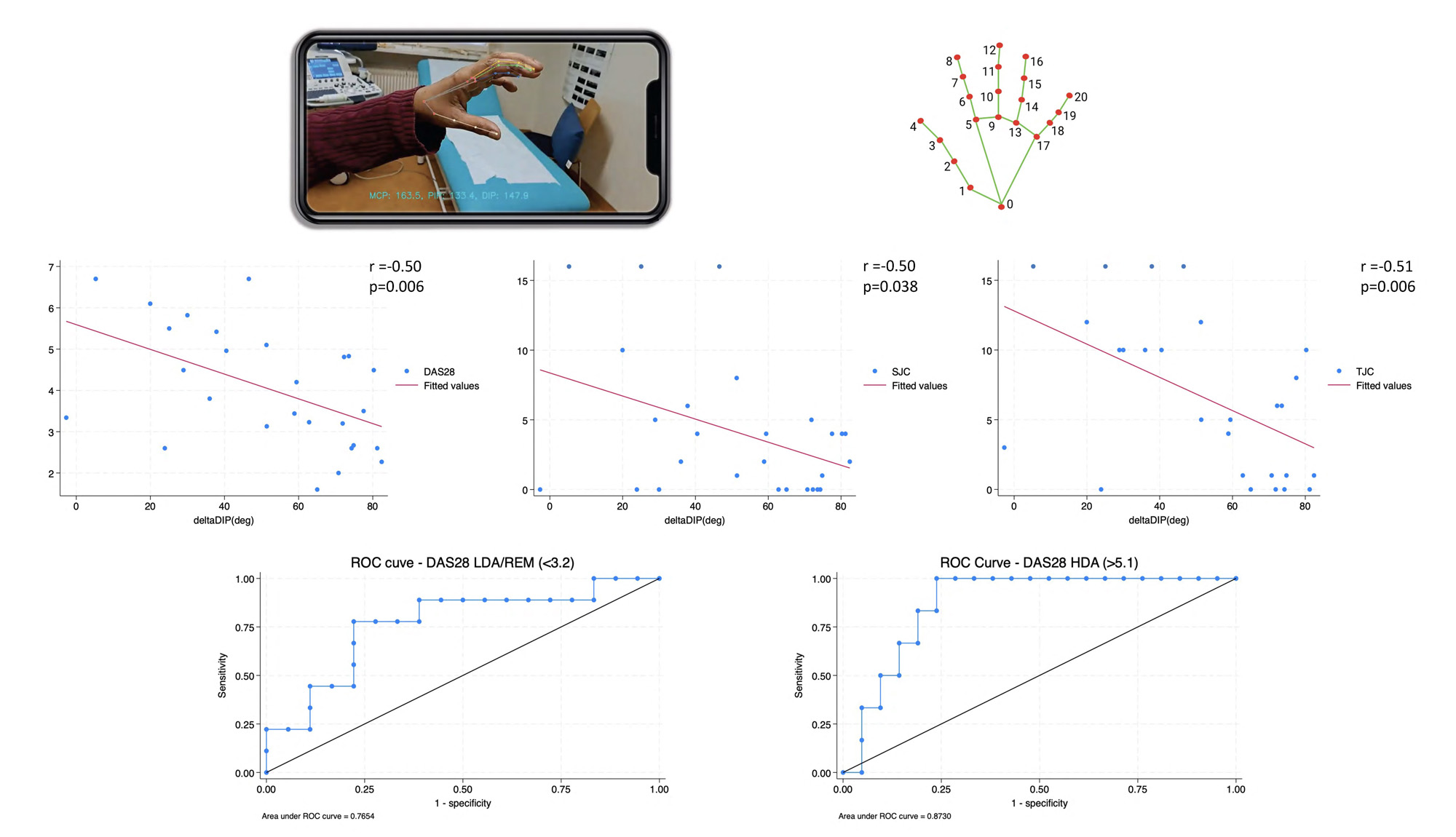Session Information
Date: Monday, November 13, 2023
Title: (1264–1307) RA – Diagnosis, Manifestations, and Outcomes Poster II
Session Type: Poster Session B
Session Time: 9:00AM-11:00AM
Background/Purpose: Computer vision technology offerspromising possibilities for remotely assessing disease activity in rheumatoid arthritis (RA) patients, enabling telemedicine and improving access to care. The objective of this proof-of-concept study was to investigate the association between hand motion tracking features obtained through computer vision and disease activity in RA patients.
Methods: This proof-of-concept study included a total of 28 patients with classified rheumatoid arthritis (RA) from three European rheumatology centers. Disease activity was assessed using the Disease Activity Score 28 (DAS28), the Swollen Hand Joint Count (SJC), and the Tender Hand Joint Count (TJC). An ad-hoc hand motion analysis app based on the MediaPipe API was developed in a Python 3.9 environment and deployed on Windows 11, enabling computer vision inference of hand motion data. Upon smartphone single camera recording, the algorithm tracked the mean degree change of joint angle on flexion and the mean time to maximal flexion for each joint (sample video available: https://tinyurl.com/4hux35ze). The prediction performance was further analyzed using the area under the receiver operating characteristic (AUROC) curve.
Results: Among the 28 patients, 9 (32.14%) were classified as having low disease activity (LDA) or being in remission, 6 (21.42%) had high disease activity (HDA), and the remaining 13 (46.42%) fell within the moderate disease activity range. The flexion of the distal interphalangeal (DIP) joint demonstrated a strong correlation with disease activity measures, including DAS28, SJC, and TJC (p = 0.006, r = -0.50; p = 0.03, r = -0.50; p = 0.006, r = -0.51, respectively). Additionally, DIP flexion was found to be a significant predictor of LDA/remission (OR 1.05, 95% CI 1.01-1.10) and HDA (OR 0.93, 95% CI 0.89-0.99). AUROCs have been depicted in Figure 1.
Conclusion: This proof-of-concept study highlights the potential of computer vision technology for remotely assessing disease activity in RA patients. Integrating hand motion tracking into telemedicine platforms could enable rheumatologists to remotely assess disease activity, thereby improving access to care for RA patients. This approach has the potential to enhance telemedicine services, particularly in situations where in-person visits are challenging or limited.
To cite this abstract in AMA style:
Venerito V, Maningold T, Markham D, Blanchard M, Iannone F, Hügle T. Single Camera Hand Motion Capturing as a Digital Biomarker for Disease Activity in Rheumatoid Arthritis Using Computer Vision: The Proof-of-Concept MeFisto Study [abstract]. Arthritis Rheumatol. 2023; 75 (suppl 9). https://acrabstracts.org/abstract/single-camera-hand-motion-capturing-as-a-digital-biomarker-for-disease-activity-in-rheumatoid-arthritis-using-computer-vision-the-proof-of-concept-mefisto-study/. Accessed .« Back to ACR Convergence 2023
ACR Meeting Abstracts - https://acrabstracts.org/abstract/single-camera-hand-motion-capturing-as-a-digital-biomarker-for-disease-activity-in-rheumatoid-arthritis-using-computer-vision-the-proof-of-concept-mefisto-study/

